Remembering Itō—The Birthplace of Japan’s First Western-Style Sailing Ship
Anjin, the blue-eyed samurai portrayed in “SHŌGUN,” was inspired by Miura Anjin—William Adams—who built Japan’s very first Western-style sailing ship in Itō, Shizuoka Prefecture. Scattered across the town are historic landmarks that commemorate his achievements, including the serene Anjin Memorial Park along the Matsukawa River and the historical Tokaikan hot spring. Itō invites you on an intellectually rich journey that blends history and relaxation.
🚉 How to Get Here: Ito Station
From Haneda Airport:
Take the Keikyu Airport Line to Yokohama Station (no transfer)
Transfer at Yokohama to the JR Odoriko Express Line to Ito Station
Approx. travel time: 2 hours 9 minutes
Fare: ¥3,110
From Tokyo Station:
Take the JR Tokaido Shinkansen or rapid train to Atami Station
Transfer at Atami to the JR Ito Line to Ito Station
Approx. travel time: 1 hour 35 minutes
Fare: ¥4,400
Anjin Memorial Park
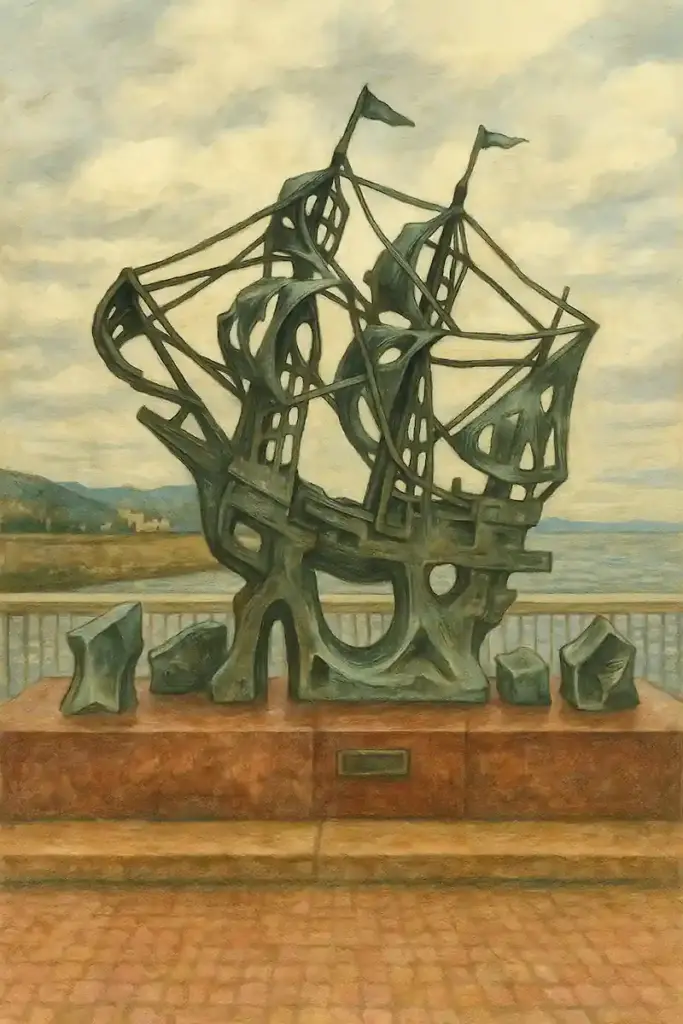
⭐ Recommended Rating
Historical Significance: ★★★
Visual Appeal: ★★
Experiential Value: ★★
Anjin Memorial Park is a quiet riverside space located at the mouth of the Matsukawa River in Itō. It marks the site where Miura Anjin built Japan’s first Western-style sailing ship. The park features a dignified bronze bust and monuments honoring his legacy. A striking bronze sculpture by local artist Kenji Shigeoka stands proudly with the sea in the background, evoking the atmosphere of early shipbuilding. While the main page covers Anjin’s life in depth, this site offers a tranquil setting to reflect on his historic contributions.
| Year Constructed | Early 2000s |
|---|---|
| Constructed by | City of Itō and Kenji Shigeoka |
| Structure & Features | Bust, sailing ship monument, seaside plaza |
| Restoration History | Regular maintenance conducted |
| Current Condition | Excellent |
| Damaged or Lost | None |
| Cultural Designation | Not officially designated |
| Remarks | Recommended to visit together with Tokaikan and Kawaguchi Park |
🗺 Address: 6 Nagisacho, Itō City, Shizuoka Prefecture
🚶 Access:
Nearest station: About 15-minute walk (1.1 km) from JR Itō Station
⏳ Suggested Visit Duration
Quick visit: About 20 minutes
Leisurely tour: Around 1 hour
📍 Highlights
- Bust of Miura Anjin: A bronze sculpture by local artist Kenji Shigeoka, beautifully lit from multiple angles at dusk.
- Sailing Ship Monument: A photo-worthy artistic representation of Japan’s first Western-style vessel.
- Seasonal Highlights: Enjoy cherry blossoms near Tokaikan in spring, and lantern-floating ceremonies and fireworks during the Anjin Festival in summer.
📌 Trivia
- Unexpected Historical Context: The shipbuilding efforts here are said to have later contributed to the development of Itō’s hot springs.
- Hidden Gems: At night, the nearby waters and area beneath Kaizu Bridge are lit up, creating a charming nighttime scene.
- Connection to Notable Figures: The Hoshino Resorts property “KAI Anjin” is a stylish hotel inspired by Miura Anjin’s legacy.
📷Gallery
Tokaikan (Historic Hot Spring Inn Linked to Miura Anjin)

⭐ Recommended Rating
Historical Significance: ★★★
Visual Appeal: ★★★
Experiential Value: ★★★
Tokaikan is a wooden hot spring inn that opened in 1928 (Showa 3). Although built about 300 years after the time of Miura Anjin (William Adams) and not directly connected to him, it houses a well-curated “History Room” with exhibitions about Anjin’s shipbuilding and diplomatic achievements. When visited together with the nearby memorial park and sculptures, Tokaikan deepens the historical experience tied to Anjin’s legacy in Itō.
| Year Built | 1928 (Showa 3) |
|---|---|
| Founder | Yasutaro Inaba |
| Structure & Features | Three-story wooden building using cypress and cedar, decorative curved gable, grand hall, and watchtower |
| Restoration History | Closed in 1997, reopened to the public in 2001 |
| Current Condition | Excellent; designated Tangible Cultural Property by Itō City |
| Damage or Loss | None |
| Cultural Status | Designated Tangible Cultural Property of Itō City |
| Remarks | On-site café and public bathing available on weekends and holidays |
🗺 Address: 12-10 Higashi Matsubara-cho, Itō City, Shizuoka Prefecture
🚶 Access:
Nearest station: About a 9-minute walk (approx. 0.6 km) from JR Itō Station
⏳ Suggested Visit Duration
Quick highlights: Around 30 minutes
In-depth exploration: 1–2 hours (including exhibitions, bathhouse, and café)
📍 Highlights
- Curved Gable Entrance: Featuring elaborate carvings of cranes and the rising sun—an impressive traditional design.
- History Room (Miura Anjin Exhibition): Permanent second-floor exhibit includes a timeline, ship models, and dioramas of Anjin’s era.
- Grand Hall & Watchtower: A 120-tatami banquet hall with a stage and carved decorations, plus sweeping city views from the third-floor watchtower.
- Café & Day-Use Bath: Enjoy a break with a view of the Matsukawa River; on weekends and holidays, visitors can also enjoy the beautifully tiled bathhouse.
- Ozashiki Culture University: In spring and autumn, guests can participate in traditional cultural experiences such as geisha performances and stage arts.
📌 Trivia
- Connection to Anjin: Although not from his era, the exhibition offers rich insight into the shipbuilding history tied to Anjin in Itō.
- Architectural Hidden Gems: Uniquely shaped “twisted timber” (henboku) adds playful character to stair railings and window frames.
- Famous Guests: Historical displays highlight visits from notable figures like Admiral Tōgō Heihachirō and Itō Sukechika, enhancing the cultural depth of the site.
📷Gallery
With its elegant wooden architecture and well-curated exhibits, Tokaikan offers an immersive and emotionally rich encounter with the legacy of Miura Anjin.
Itō City Hall (Modern Architecture with Historical Exhibits)
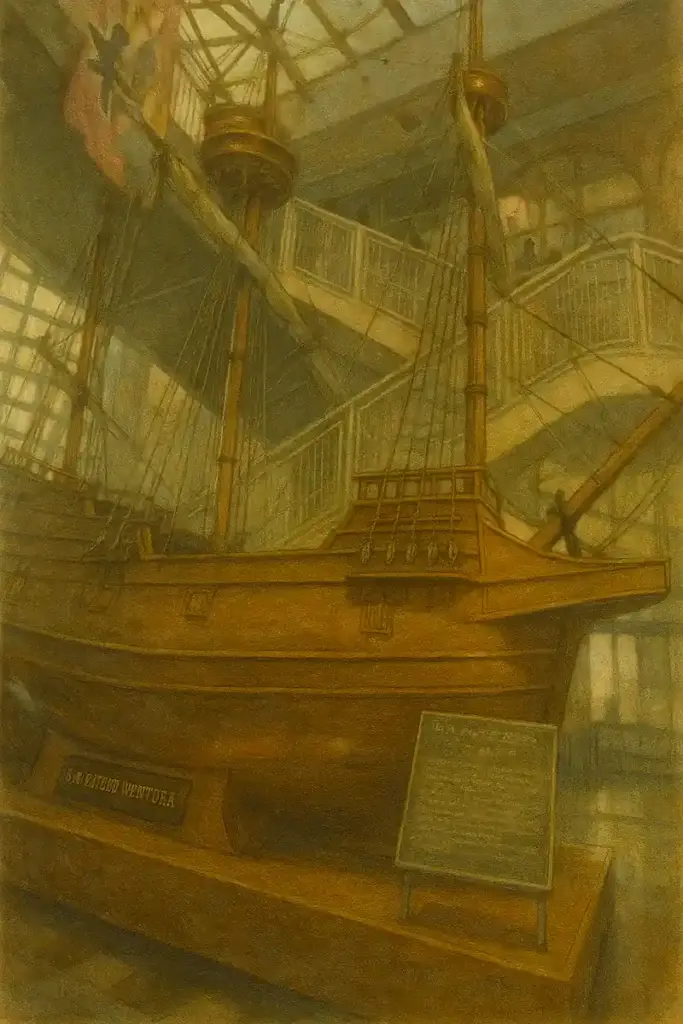
⭐ Recommended Rating
Historical Significance: ☆
Visual Appeal: ☆☆☆
Experiential Value: ☆☆
While Itō City Hall does not have a direct connection to Miura Anjin, it serves as the central hub of the city that once played a significant role in his history. The building actively promotes tourism and local heritage, with several outdoor sculptures including a statue of Anjin. Inside the civic hall, visitors can enjoy rotating exhibitions and local artwork. Its architectural features—like the open atrium, theater-style grand staircase, and multi-level layout—are often praised as “museum-like” and are worth a look on their own.
| Year Built | Unknown (recent modern architecture) |
|---|---|
| Structure & Features | Multi-level layout utilizing a slope, open atrium, grand staircase, outdoor sculptures, animated clock |
| Restoration History | Regular maintenance conducted |
| Current Condition | Excellent |
| Cultural Status | Not designated (public facility) |
| Remarks | Tourist info corner, exhibit space, ample parking |
🗺 Address: 2-1-1 Ohara, Itō City, Shizuoka Prefecture
🚶 Access:
Approx. 30-minute walk (2 km) from JR Itō Station, or accessible by car or bus (parking available)
⏳ Suggested Visit Duration
Interior and hall: 15–30 minutes
Full exploration (events, views, staircase): About 1 hour
📍 Highlights
- Open Atrium and Grand Staircase: Theater-like layout popular as a photo spot.
- Animated Dwarf Clock: A whimsical mechanical clock in the hall attracts attention during local events.
- Outdoor Sculptures and Anjin Statue: Sculptures by Kenji Shigeoka dot the plaza, adding charm to a stroll.
- Itō MAGARI Hina Dolls: Seasonal Hina doll display on the staircase creates a festive photo-friendly atmosphere.
- Tourist Information Corner: Provides helpful details on Miura Anjin-related sites like the memorial park and Tokaikan.
📌 Trivia
- Architectural Insight: Widely praised as “museum-like” in design.
- Topographical Design: Entering from the rear leads to upper levels; from the front, to the main staircase—a unique layout.
- Community Connection: In addition to tourism, the hall serves as a space for public exhibits and events.
📷Gallery
A modern and underrated stop that serves both as a gateway to local history and a resource for exploring Miura Anjin’s legacy throughout Itō.
Anjin Ondo Song Monument (Kawaguchi Park & Matsukawa Promenade)
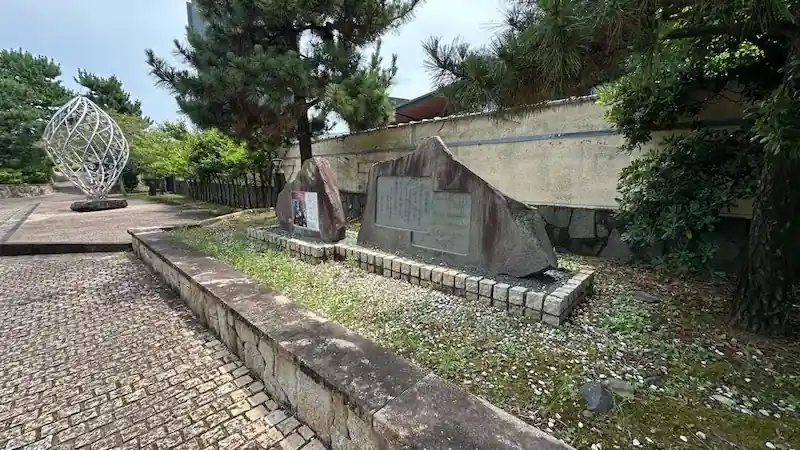


⭐ Recommended Rating
Historical Significance: ★★★
Visual Appeal: ★
Experiential Value: ★★
Situated at the mouth of the Matsukawa River, Kawaguchi Park forms part of a historical promenade dedicated to Miura Anjin. A highlight of this area is the Anjin Ondo Song Monument, a stone engraving of lyrics penned by Anjin researcher Tadashi Makino. The song, honoring Anjin, was recorded in 1992.
| Year Erected | 2004 (400th Anniversary of Anjin’s Shipbuilding) |
|---|---|
| Established by | Anjin Ondo Monument Committee (Chair: Akira Nakamura) |
| Structure & Features | Stone monument engraved with lyrics and musical score |
| Current Condition | Excellent |
| Cultural Status | Not designated |
| Remarks | Located along the promenade in Kawaguchi Park, near the Anjin Monument and tile mural |
🗺 Address: 86-14 Nagisacho, Itō City, Shizuoka (inside Kawaguchi Park)
🚶 Access:
Approx. 14-minute walk (about 1 km) from JR Itō Station
⏳ Suggested Visit Duration
Quick visit: Around 10 minutes
Leisurely walk with nearby sites: 30–40 minutes
📍 Highlights
- Engraved Monument: Lyrics by Tadashi Makino and a melody by Ikusei Sekino are inscribed on the stone.
- Anjin Monument & Tile Art: Nearby artworks depict Western-style shipbuilding scenes for an immersive historical experience.
- Promenade Ambience: Enjoy a scenic stroll along the riverside dotted with monuments and serene views.
📌 Trivia
- Folk Anthem: The song is performed during local festivals and bon dances, cementing its place in community culture.
- Commemorative Purpose: Built to mark the 400th anniversary of Japan’s first Western-style ship construction by Anjin.
- Local Historical Contribution: Makino’s lyrics reflect years of historical research and local pride.
As you wander the Matsukawa Promenade, take a moment to experience this melodic tribute to Anjin—where history and song converge in a heartwarming local landmark.
Anjin Street
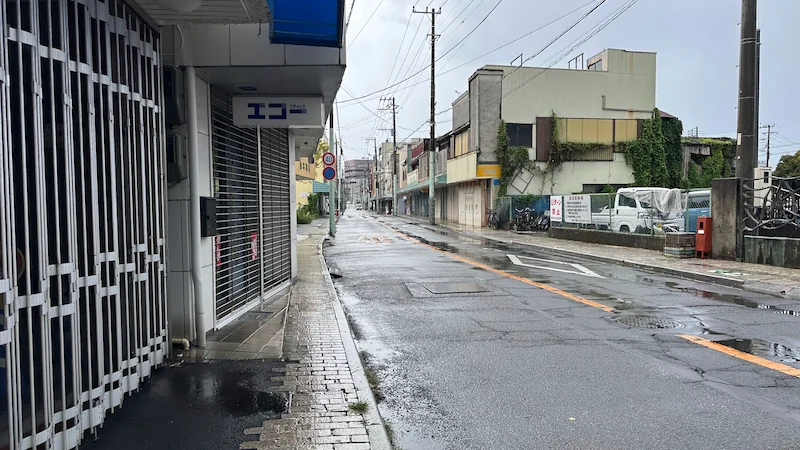


⭐ Recommended
Historical Value: ☆
Visual Appeal: ☆
Experiential Value: ☆
Anjin Street, located in Ito City, is a historic shopping street associated with Miura Anjin. It appears as you head south after crossing the Okawa Bridge. This quiet street, steeped in the atmosphere of a hot spring town, is home to beloved local spots such as the long-standing café Yamamoto Coffee, which opens from the morning. The calm, welcoming ambiance is complemented by shutter art resembling traditional pressed pictures, subtly reflecting the neighborhood’s unique character and culture.
| Year Built | — (A culturally significant street reflecting historical background, with no specific year of construction) |
|---|---|
| Builder | — |
| Structure / Features | Shopping street: nostalgic kissaten cafés, shutter art |
| Renovation / Restoration History | — |
| Current Condition | Still exists, cherished by the local community |
| Demolition / Damage | None |
| Cultural Property Designation | None |
| Notes | A street named after Miura Anjin, serving as a link between local history and everyday life |
🗺 Address: Ito City
🚶 Access
About a 15-minute walk (approx. 1.1 km) from JR Ito Station
⏳ Suggested Visit Time
Quick highlights: around 5 minutes
Leisurely exploration: around 20 minutes
📍 Highlights
- Yamamoto Coffee: A long-established kissaten café open from the morning—perfect for a relaxing break in a calm setting.
- Shutter Art: Colorful artwork on shop shutters adds warmth and personality to Anjin Street.
- Atmosphere for Strolling: The gentle pace of life blends with the surrounding hot spring town’s charm, making for a pleasant walk.
Though not flashy, Anjin Street has a quiet charm where echoes of history meet everyday local life. It’s especially recommended for those who want a relaxing stroll after enjoying the hot spring district, or for anyone looking to soak in a retro Showa-era atmosphere.
Ajiro: A Filming Anecdote from the ‘Shōgun’ Drama
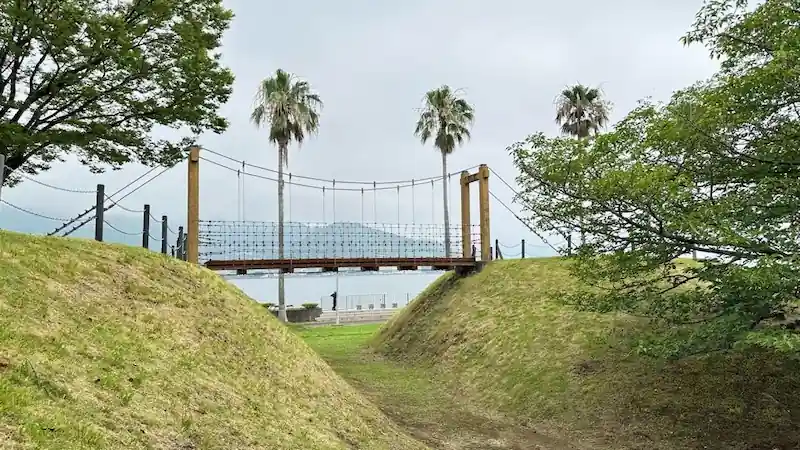
Ajiro, a small fishing port neighboring Itō City, is not directly connected to Miura Anjin. However, it has recently gained attention due to an interesting anecdote linked to the production of the popular drama series Shōgun (FX/Disney+).
Although the series is set in Japan around the year 1600, none of it was actually filmed in Japan. Instead, the entire production took place in and around Vancouver, Canada—primarily in Minaty Bay and Port Moody.
The scenic backdrop of “Ajiro Fishing Port” in the show was faithfully recreated in a manmade inlet on the site of a defunct cedar mill near Port Moody. Even pine forests and piers were painstakingly built as part of the set.
The production team spent nearly ten months constructing sets and enhancing them with VFX to authentically portray “Ajiro Port.” The result was so evocative that some jokingly dubbed it the “Vancouver of Shizuoka,” thanks to its striking resemblance to the real Ajiro area.
The timeless charm of Itō and Ajiro was revived across the ocean as the soul of a grand historical drama. Next time you’re strolling through Ajiro, why not share this fascinating behind-the-scenes tale?
📷Gallery
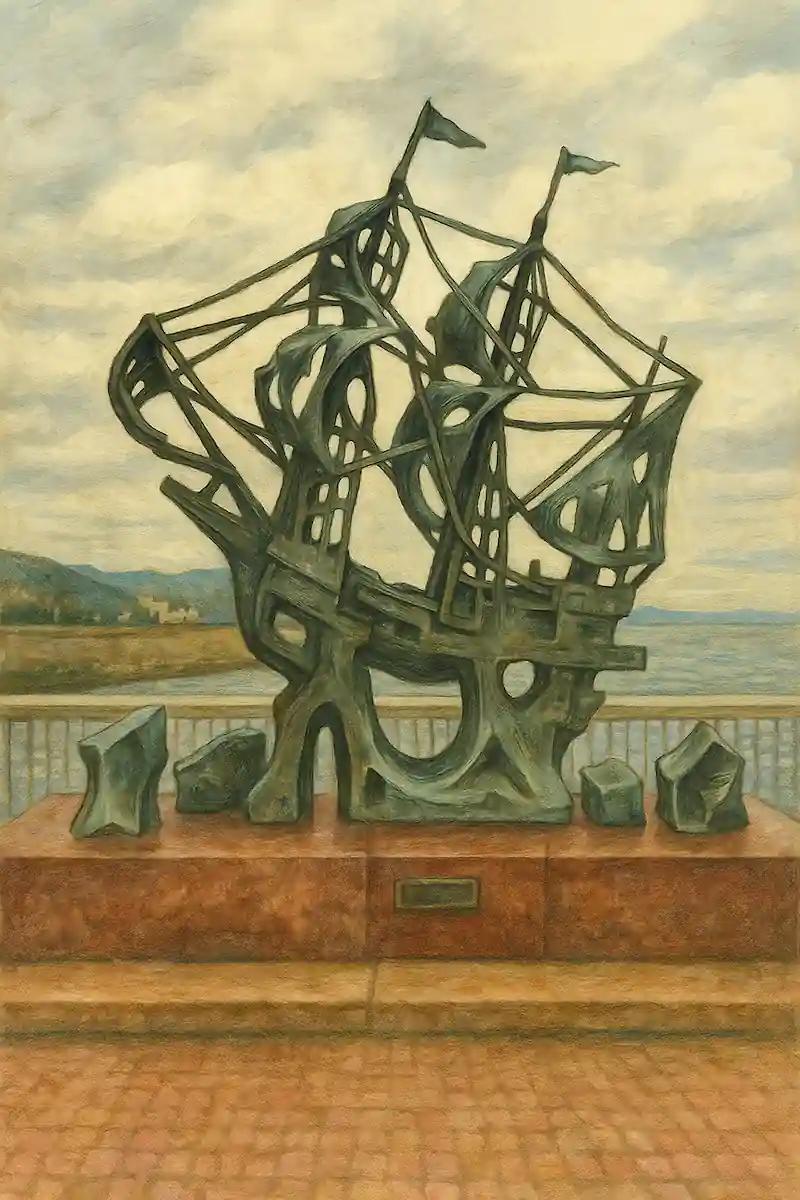

comment